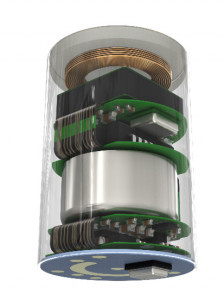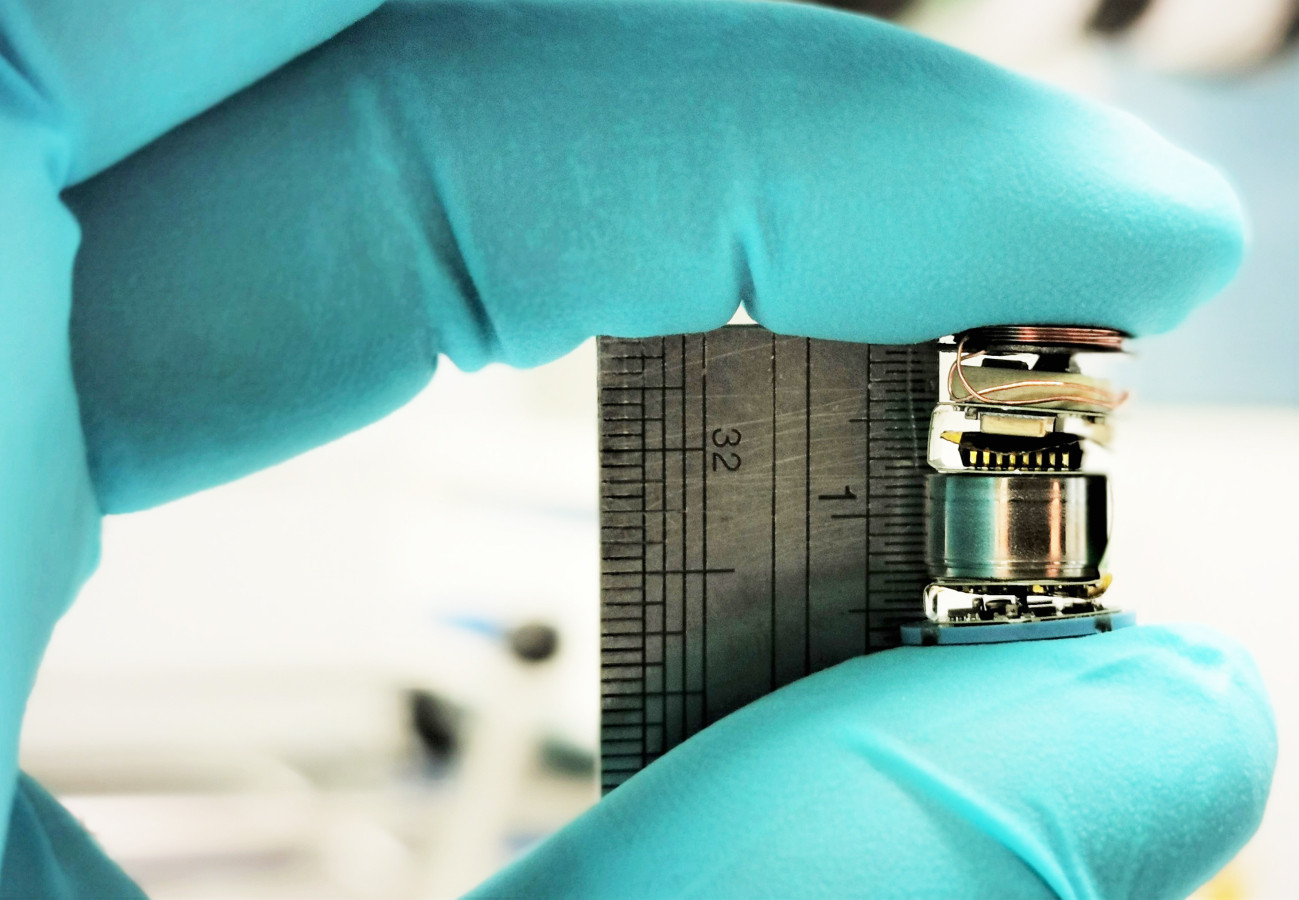Announcement and call for papers for the Landshut Symposium on Electronics and System Integration (ESI) 2024
From global challenges such as the generation of renewable energy or the switch to e-mobility to modern applications of medical technology and digitalization: electronics and electrical engineering form the basis for all these developments. For 15 years now, Landshut University of Applied Sciences has been offering a platform for the exchange of ideas between industry and research in the forward-looking field of electronics/electrical engineering and microsystems technology with its symposia. From 2008 to 2016, the "Microsystems Technology Symposium" offered the latest findings from science and practice every two years; from 2018, the range of topics was extended for the first time to the "Electronics and System Integration Symposium".
The 4th Electronics and System Integration ESI Symposium will take place on April 17, 2024 at Landshut University of Applied Sciences. Experts are cordially invited to present innovative solutions, services or research findings to an interested specialist audience in specialist lectures and at a specialist exhibition. The elaborated contributions can also be published online in the accompanying digital conference proceedings (with assignment of a DOI identifier). Furthermore, companies, start-ups, graduates and students can present innovative products, new developments and the results of research and development projects in a poster session. The event, which is planned to take place in person, will once again offer a wide range of insights into current developments and trends as well as the best opportunity for networking.
The ESI symposium offers a cross-technology and cross-industry platform and is aimed at decision-makers and employees from companies and service providers (production, research & development, technical marketing, etc.), universities, universities of applied sciences, research institutes, associations and all interested parties. We would like to receive proposals for presentations in the following areas in particular:
- Sensor and actuator systems
- Assembly and connection technology
- System components and system integration
- Embedded systems
- Robotics, autonomous systems and industrial solutions
- Printed electronics
- Artificial intelligence
- Sustainability in the electronics environment
The quality of the presentations or contributions is ensured by the selection process by the expert committee, which decides on acceptance, develops suggestions for changes and finally approves publication in the conference proceedings (review). The registration deadline for presentations is October 23, 2023.
The ESI symposium is organized by the Microsystems Technology Cluster together with the Electronics and System Integration research focus at Landshut University of Applied Sciences, with Prof. Dr. Artem Ivanov as scientific director. Further information on the ESI 2024 symposium, details on registering for presentations etc. at: www.symposium-esi.de.
World's smallest impedance spectroscopy system in the form of a pill finds weak points in machines and people
 Micro Systems Technologies (MST)Simply pop a pill to identify faults - researchers at Fraunhofer IZM, in cooperation with Micro Systems Technologies (MST) and Sensry GmbH, have made this a reality. As small as a piece of candy, the waterproof IoT sensor can reliably measure the properties of liquids even in places that are difficult to access. This can make the maintenance of industrial machinery much easier and even help to identify diseases.
Micro Systems Technologies (MST)Simply pop a pill to identify faults - researchers at Fraunhofer IZM, in cooperation with Micro Systems Technologies (MST) and Sensry GmbH, have made this a reality. As small as a piece of candy, the waterproof IoT sensor can reliably measure the properties of liquids even in places that are difficult to access. This can make the maintenance of industrial machinery much easier and even help to identify diseases.
The larger an industrial machine, the more difficult it is to detect an unwanted deviation in oil pressure or even a leak in a pipe from the outside in the event of a malfunction. It often takes a long time for specialist personnel to find the needle in the haystack. This results in production downtime and high costs. The situation is similar when it comes to identifying the causes of illness in humans. If patients complain of pain in the abdomen, there is usually no way around a complex gastroscopy or colonoscopy. In such cases, electrochemical impedance spectroscopy can provide a remedy.
In this procedure, a frequency spectrum is sent from one electrode through a medium to a second electrode: A spectrum, i.e. a specific fingerprint of this medium, can be derived from this. If changes in material or fluid properties become apparent, this can be an indication of either the progressive corrosion of a component or the presence of a particular disease. Until now, impedance analyzers have not been small and mobile enough to be used for these purposes. Researchers at the Fraunhofer Institute for Reliability and Microintegration IZM in Berlin, with the support of MST and Sensry, have therefore developed a compact and modular IoT sensor for these applications that can measure impedances and transmit them wirelessly. As a result, it is not only waterproof, but also biomedically compatible.
The sensor is made of a biocompatible polymer and combines the two necessary electrodes with numerous components for analyzing environmental properties, including six sensors for measuring a wide range of data, in a space measuring just 11 x 16 square millimetres. In addition to temperature, pressure, humidity and sound in the environment, the small all-rounder can also record its own acceleration behavior, rotation or ambient noise. Light and colors can be determined by an integrated light sensor. © Fraunhofer IZM
© Fraunhofer IZM
Specifically, in the event of a machine malfunction, for example, the sensor is inserted into an oil pipe, which then flows through the entire system. Precise data on the properties of the environment is transmitted wirelessly in real time to specially developed software with a web interface for PCs and smartphones.
If a point is reached at which the pressure or the fluid spectrum deviates from the norm, this is an indication that the cause of the problem has been successfully localized. The spectra of some liquids, such as oil or water, are already stored in the software to make it easier to classify the collected data.
The miniaturization of the components posed a major challenge in the production of the sensor. In particular, reducing the coil diameter to 10 millimetres for wireless charging was a hurdle. However, a sophisticated system design made it possible to overcome this challenge. At the start of the project, Sensry GmbH provided its circuit diagrams and Kalisto firmware as the basis for developing the sensor.
To accommodate a total of over 70 passive and active components on a flexible and biocompatible circuit board, it was designed from a liquid crystal polymer and manufactured in four layers by DYCONEX, an MST company. Nevertheless, it is just 175 micrometers thin and therefore barely thicker than a human hair.
A system-in-package was produced on a six-layer interposer and forms the core of the sensor, as this is where the IoT system is combined. Thanks to a built-in induction coil, the capsule does not even need to be opened for wireless charging and can be charged wirelessly via Qi technology. However, a classic DC charging process is also possible via a docking station for calibrating and programming the sensor. To prevent the very small components from getting too hot during operation, the sensor is also filled with an epoxy resin that insulates the components from each other and dissipates the heat to the outside. At the lower end, it is sealed with a 0.5 millimeter thin four-layer ceramic plate, which was manufactured by Micro Systems Engineering GmbH, an MST company, and on which the electrodes for impedance spectroscopy are mounted next to the pressure sensor. As a trade fair demonstrator, the IoT sensor shows how intelligent system design and semiconductor packaging can greatly miniaturize electronics without losing functionality.
 © Fraunhofer IZMResearchinto electrochemical impedance spectroscopy is in full swing and the possibilities for medical technology are far from exhausted. The project has been running since 01.04.2021.
© Fraunhofer IZMResearchinto electrochemical impedance spectroscopy is in full swing and the possibilities for medical technology are far from exhausted. The project has been running since 01.04.2021.
Source: Fraunhofer IZM-Tech News
Announcement for European Microelectronics & Packaging Conference (EMPC 2023) in Hinxton/Cambridge
In September, IMAPS Europe is once again organizing the pan-European conference European Microelectronics and Packaging Conference EMPC. The event is the most important conference for microelectronics, integration and connection technologies in Europe. For some years now, the ESTC of the IEEE-CPMT and the EMPC of IMAPS have alternated. Both associations act as co-sponsors of the other event, thereby acknowledging the strong professional relationship between their fields of work. The EMPC, which is held every two years, has taken place in Friedrichshafen, Warsaw, Pisa and, under difficult conditions, in Gothenburg in recent years. The conferences offer excellent opportunities for professional exchange, establishing new business contacts and cooperation in the field of interdisciplinary projects. From 11-14 September 2023, IMAPS UK is organizing this year's conference at the Wellcome Genome Campus in Hinxton near Cambridge, to which we cordially invite you. You will attend presentations and posters from leading companies and academic institutions on new trends in electronic devices and related technology. The event will introduce new materials and possibilities in packaging as well as potential applications of systems. EMPC 2023 is planned as a face-to-face event, which will again give participants and exhibitors the opportunity to network in person in the spacious environment of the Wellcome Genome Campus. The detailed program is currently being developed and will be available at empc2023.com once completed.
 WellcomeGenome Campus in HinxtonJoinus on Monday, September 11, 2023 for in-depth Professional Development Courses (PDC) with recognized experts to gain a detailed insight into specific aspects of packaging technology.
WellcomeGenome Campus in HinxtonJoinus on Monday, September 11, 2023 for in-depth Professional Development Courses (PDC) with recognized experts to gain a detailed insight into specific aspects of packaging technology.
Calendar of events
|
Location |
Period |
Name |
Organizer |
|
Cambridge |
11 - 14 Sep 2023 |
EMPC 2023 |
IMAPS UK |
|
Łańcut near Rzeszów |
24 - 27 Sep 2023 |
45th IMAPS Poland Conference |
IMAPS Poland |
|
San Diego |
02 - 05 Oct 2023 |
56th International Symposium on Microelectronics |
IMAPS US |
|
Munich, Germany |
Oct 19 / 20, 2023 |
IMAPS Germany Fall Conference |
IMAPS DE |
|
Munich, Germany |
Nov 14 - 17, 2023 |
SEMICON EUROPE |
SEMI Europe |
This calendar is subject to change. Please refer to the information and notes of the organizers on the respective websites!
IMAPS Germany - Your association for packaging and interconnection technology
IMAPS Germany, part of the 'International Microelectronics and Packaging Society' (IMAPS), has been the forum in Germany for all those involved in microelectronics and packaging technology since 1973. With almost 300 members, we essentially pursue three important goals:
- we connect science and practice
- we ensure the exchange of information among our members and
- we represent the position of our members in international committees.
Imprint
IMAPS Germany e. V.
Kleingrötzing 1, D-84494 Neumarkt-St. Veit
1st Chairman: Prof. Dr.-Ing. Martin Schneider-Ramelow, Director of the Fraunhofer Institute for Reliability and Microintegration (IZM),
Treasurer
(for questions about membership and contributions):
Ernst G. M. Eggelaar,
You can find detailed contact information for the members of the Executive Board at www.imaps.de
(Executive Board)


